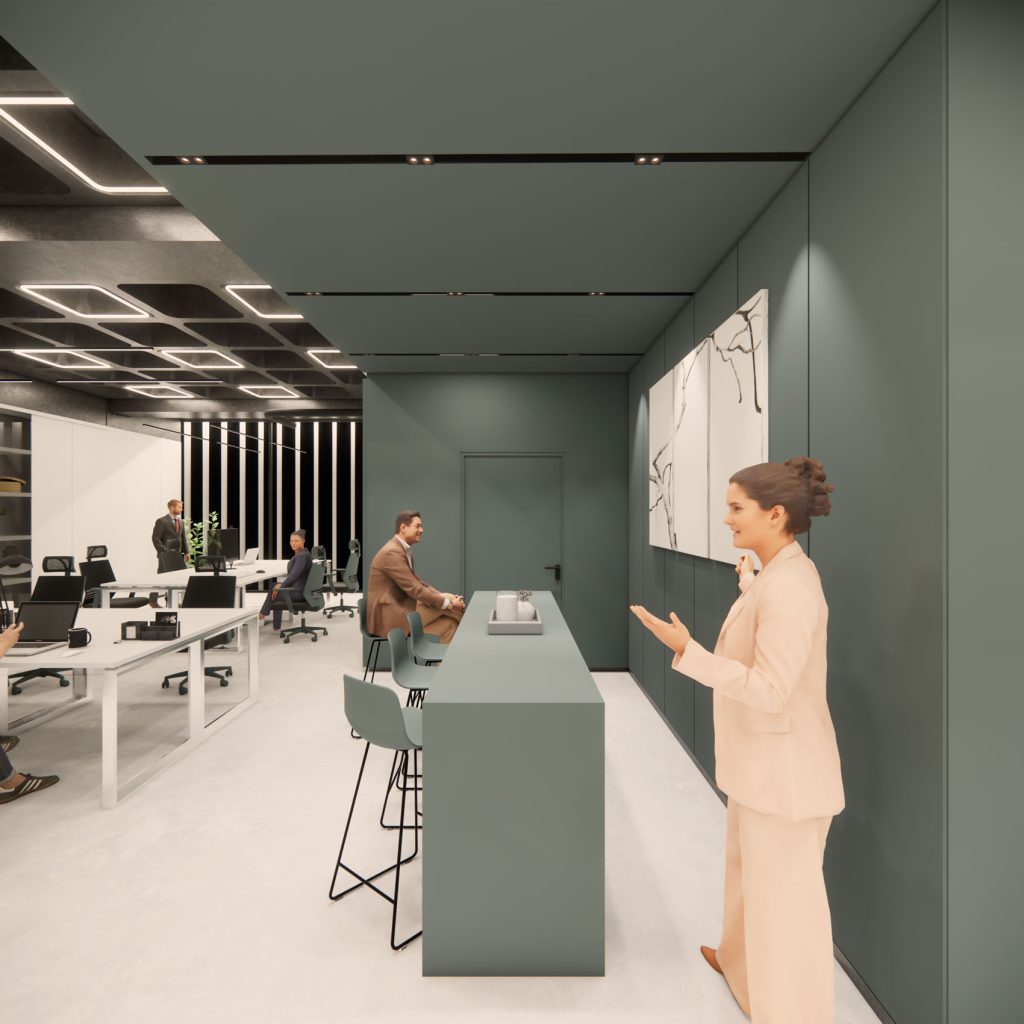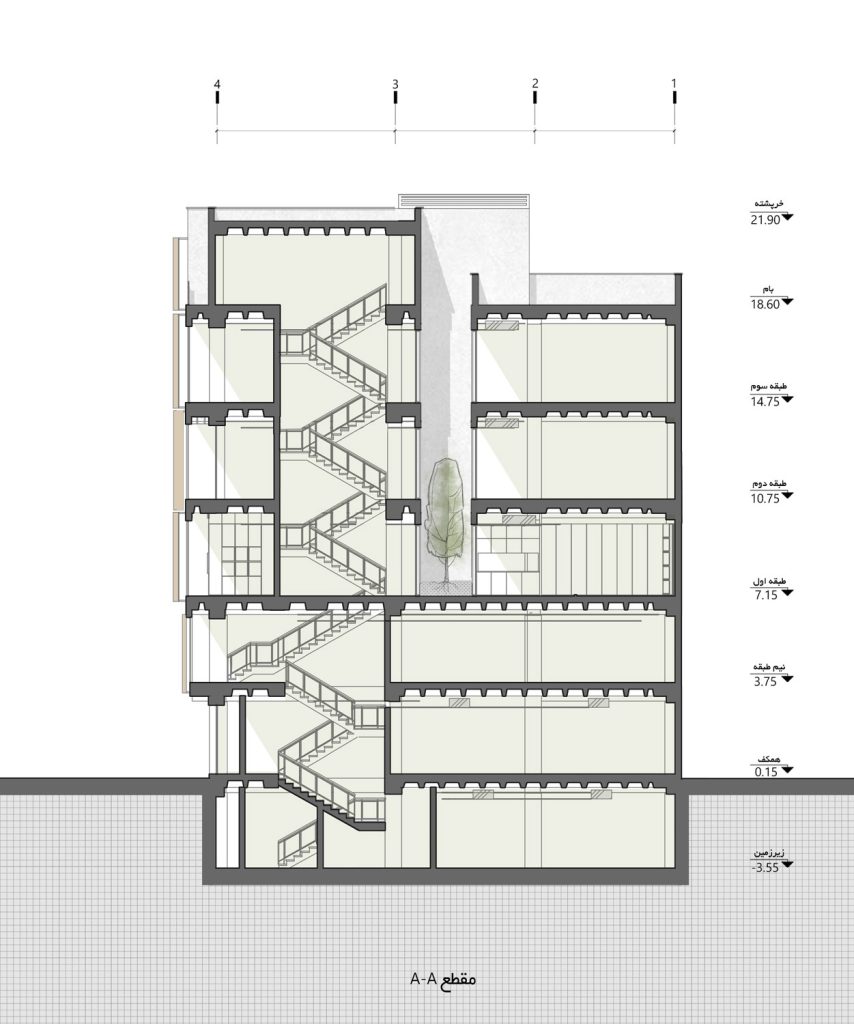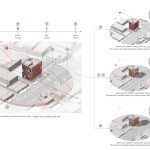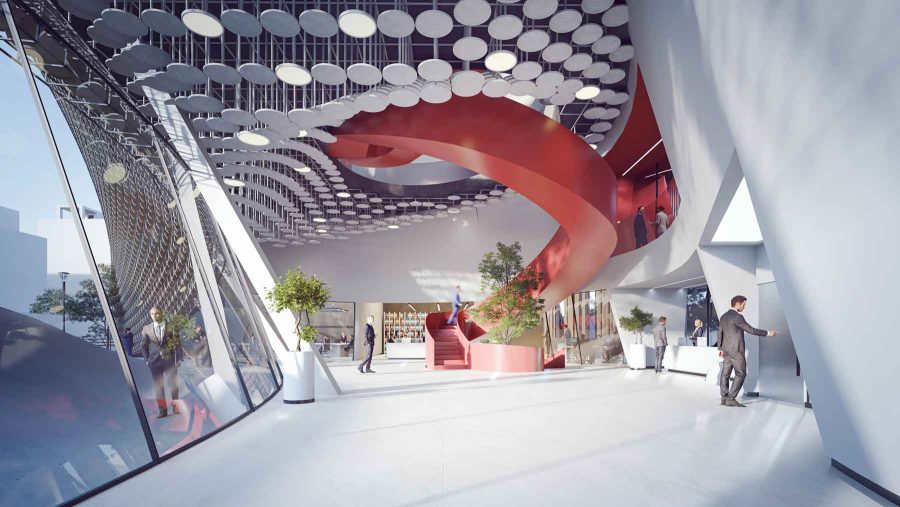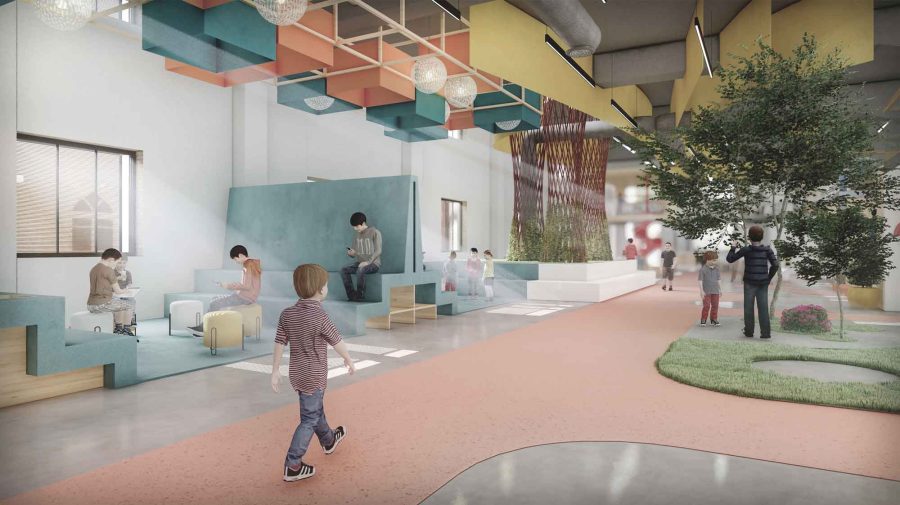Energy consumption in buildings, especially in areas with specific climatic conditions such as Yazd, which faces intense sunlight and high temperatures, has always been a major challenge for design in this city. This project aims to strike a balance between sustainable design, aesthetics, and functional needs. The building includes three main usage sections: Basement, Ground Floor, and Mezzanine. These spaces are allocated to commercial units, providing a suitable environment for economic activities and social interactions. Three Upper Floors are fully dedicated to office units and include six independent units designed with modern and functional design, providing a comfortable and productive workspace for users.

To create effective interaction between building users and the surrounding urban environment, and to ensure maximum transparency, the first facade of the building is entirely designed with glass dividers. This design provides a panoramic view for users and enhances visual connection with the city while helping to naturally light the interior spaces. Vertical movable shades are used to manage sunlight exposure and reduce its negative effects. These shades are designed with precise solar geometry analysis and can actively respond to climatic conditions. During hot seasons, they reflect sunlight, preventing internal heat gain and reducing cooling system usage. Conversely, during cold seasons, they allow sunlight and natural light to enter the interior, providing useful illumination and contributing to natural heating of the space, reducing energy consumption for heating.
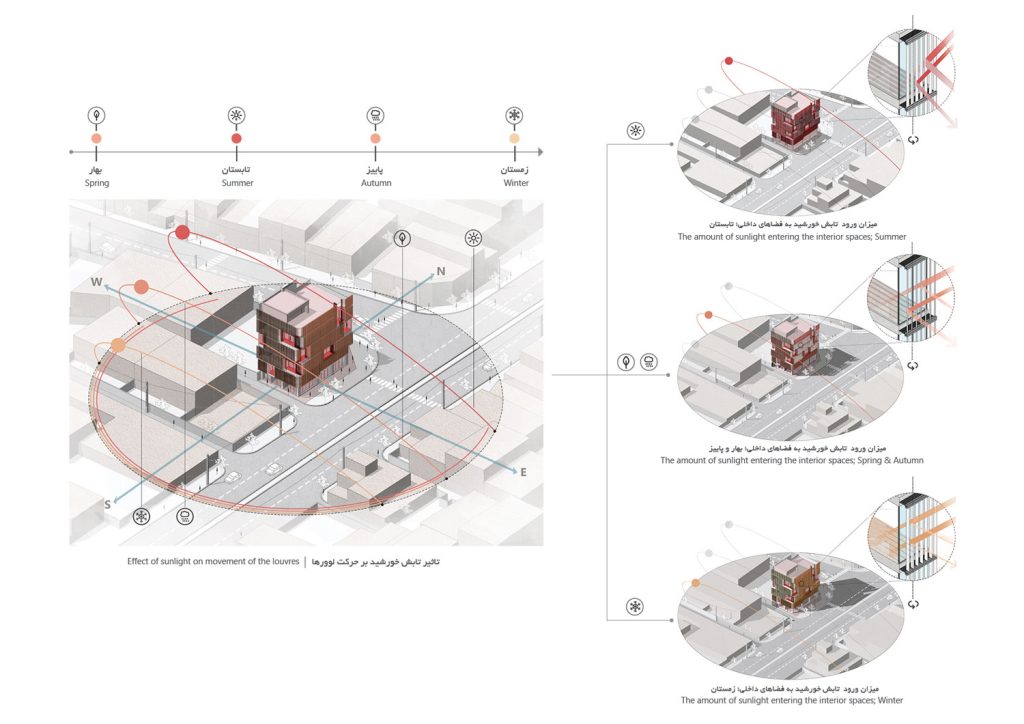
The interior design emphasizes creating a modern and functional space. The use of exposed installations adds a sense of dynamism to the space and creates a visually attractive structure. This approach not only enhances interior aesthetics but also contributes to the productivity of office and commercial spaces.
This commercial-office building, by integrating sustainable architecture, smart technologies, and modern design, provides a comprehensive response to functional and aesthetic needs. The ability of the shades to optimize climatic conditions in hot and cold seasons has increased energy efficiency.







